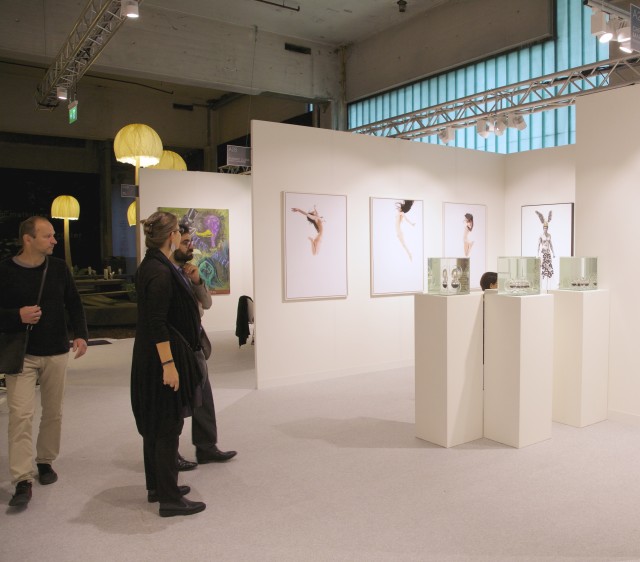Space for discovery: VOLTA14
Basel was a buzz of frenzied art enthusiasts this past week, with both young and seasoned collectors and gallerists eager to mingle. Between blockbuster shows at the Kunstmuseum Basel and Schaulager, and the art fair stalwarts Art Basel and Liste, the VOLTA fair returned in its 14th year with focus set on new international positions. The fair, which debuted in 2005 under Artistic Director Amanda Coulson, has trademarked itself on being the preeminent hub for emerging artists and galleries, offering a unique platform for discovery and solo presentation.
This year, VOLTA inaugurated the former COOP distribution centre, a move which led to a slight decrease in the number of participating galleries. Nonetheless, the new space offered an intimate setting that was an appreciated oasis outside of the sometimes claustrophobic and impersonal nature of larger fairs. The setup, like a maze one would not mind getting lost in, provided ample space and each of the galleries – stemming from counties far and wide – to not only exhibit their work, but to engage with their visitors. A spokesman for the first-time VOLTA exhibitor, Christian Marx Galerie, noted that this scene allowed for a culture of networking and discussion. “Selling is good, of course”, he states, “but to gain this bigger network of clients and colleagues is so important.”
In this environment, it was possible to engage with the curators – and, in some cases, even the artists themselves – to speak about their missions, practice and inspiration. It was through these interactions that collectors were introduced to the artwork of smaller and mid-size galleries, a growing problem moulded by finance and exclusion at fairs like Art Basel. Art Radar was able to sit down with a few of the gallerists to get the scoop on the week’s events, what was selling and how VOLTA may be reconstructing an outdated and privileged art fair model.
VOLTA14’s smaller scale meant that focus truly was on the Discoveries. One of the first encounters for visitors was London’s Fiumano Clase, attending the fair with the work of Filipino artist Rhine Bernardino and Iran’s Shadi Rezaei in tow. Bernardino’s striking sculptural series, Regla, which employs glass, water and her own menstrual blood, is made up of 12 sculptures (though only a few were on display in Basel), one for each menstrual cycle of the year. The installation serves as “a comment on human perception” and the artist’s belief in the potential of art to encourage social change. She states that her work provides “a makeshift laboratory wherein collections of menstrual blood are not associated with disgust but regarded as objects of inspection and conversation”. Nestled within the cozy, albeit cramped, gallery booth, Bernardino’s vessels are more than objects, they are treasured relics of who the artist was at a particular time and place, the quantity and consistency of the blood collected in each receptacle speaking to the preservation of self.
Regla was effortlessly exhibited alongside When the Curtain Falls, a video installation by Shadi Rezaei. Inspired by her birthplace, Tehran, Rezaei’s work portrays a series of mutable and spontaneous gestures that negotiate the connection between stability and uncertainty, between bondage and lasting impression. The video, which depicts a woman confronting states of repression and liberty, was also exhibited next to a series of photographic stills drawn from the artist’s horoscope and personal mythologies. In breaking from a viewer’s preconceived notion that Rezaei’s work – spattered with Arabic calligraphy and mosaic motifs – is about religion or politics, the artist speaks of personal identity and shattering stereotypes.
Please follow THIS LINK to read the full review
